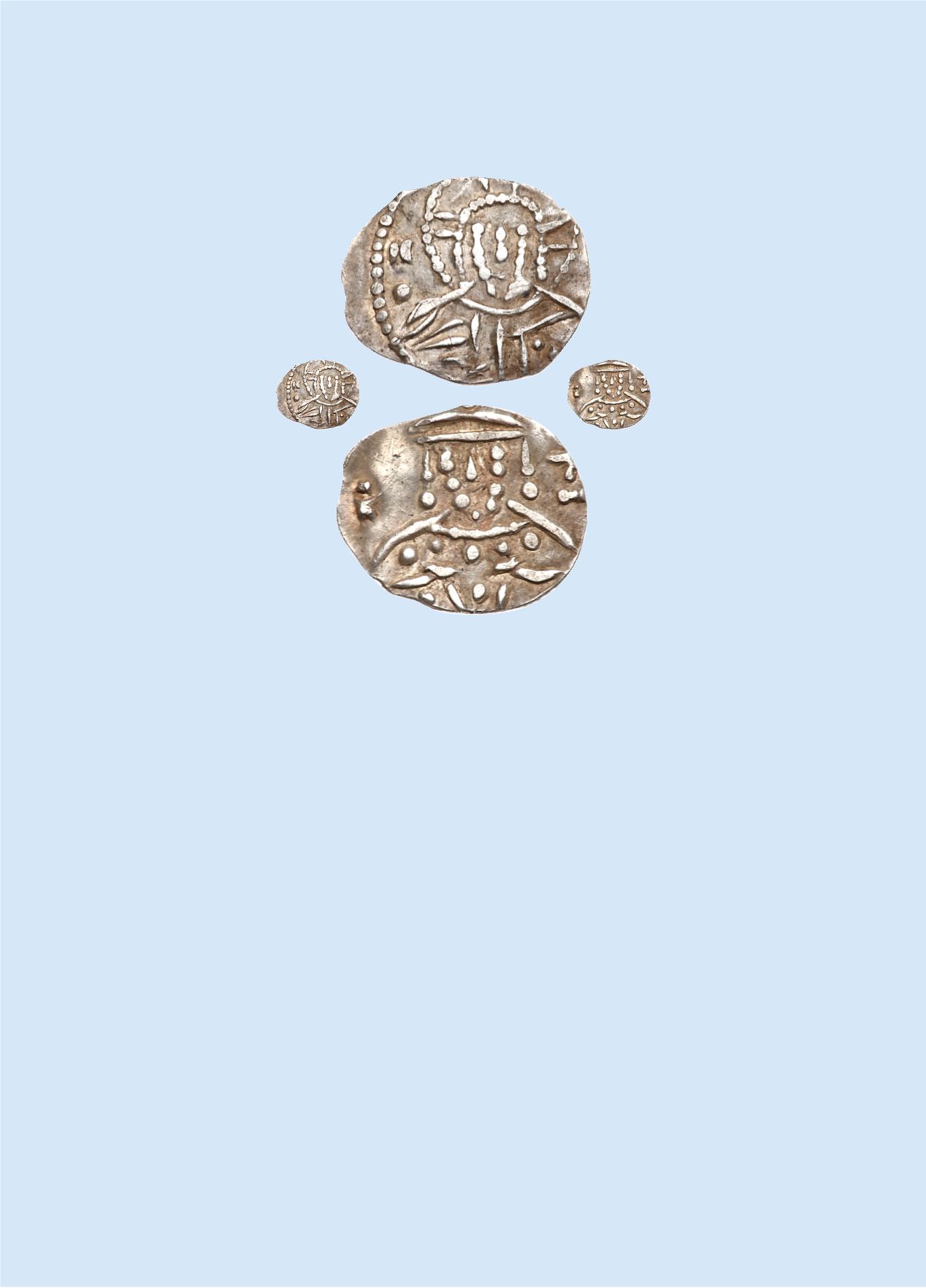

1272
Constantine XI Palaeologus. Silver
⅛
Stavraton (0.55 g), 1448-1453. Constantinople. IC-XC across field,
bust of Christ Pantocrator facing, holding Gospels. Rev. Crowned bust of Constantine XI facing; across
field, sigla: ./K-T/_. (DOC 1789; cf. Bendall, “The Coinage of Constantine XI,”
RN
(1991), 105-6 (unlisted
sigla); LPC -; PCPC -; SB -). Lightly toned. Choice very fine.
$ 2,500
ex Lanz 162 (6 June 2016), lot 437
ex Roma XXII (28 November 2015), lot 839.
The silver stavraton was introduced by John V Palaeologus in ca. 1367 to compete with Venetian silver in the tattered late
Byzantine Empire. Its name, meaning “cross coin,” has been variously attributed to the small crosses that introduce the Greek
legends (a rare feature on Byzantine coinage) or to the presumed derivation of the denomination from the double gigliato of
Naples, which featured a prominent cross design. Constantine XI, the issuer of this particular fractional eighth stavraton,
was the last emperor of the Palaeologan dynasty and indeed the last man to rule the Byzantine Empire. He was killed while
defending Constantinople against the final successful Ottoman assault of Mehmed II Fetih in April/May 1453. After
his death and the fall of the city, Constantinople became the seat of the Ottoman Empire under the new name of Istanbul.
In 1991 Simon Bendall published a hoard of 158 silver Palaeologan coins from John V (1354-1391) to Constantine XI (1448-
1453). Until 1974 when two 1/2 stavrata were discovered the coinage of Constantine XI was unknown. The hoard that Bendall
published added to the corpus a further five 1/2 stavrata, thirty-five stavrata, and fifty 1 stavrata, making the total known coins of
Constantine XI just 92 of all denominations. Bendall argues that the 1/2 stavrata were probably struck in 1449 soon after Constantine
was crowned emperor in Mistra, capital of Morea, where he had energetically served as despot before being nominated by his
brother, John VIII, to succeed him, and the stavrata and 1 stavrata were only struck afterwards, during the siege of Constantinople.
Using silver acquired from the churches in Constantinople, these 1 stavrata of Constantine XI were, according to Bendall, probably
struck during the final siege of the city conducted by Mehmed II in 1453, and are thus the likeliest contenders for being the very
last Byzantine coins. They were issued to pay Constantine’s soldiers and mercenaries, and also the workers who rebuilt the city’s
walls each night after the previous days’ bombardment from Mehmet’s cannons. This particular coin, though not from the hoard
documented by Bendall and from seemingly new dies and sigla, is a particularly fine specimen, in fact finer than most in the hoard,
and has a crudely engraved but very clear and sharp portrait of the last Byzantine emperor.



















